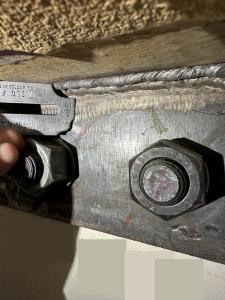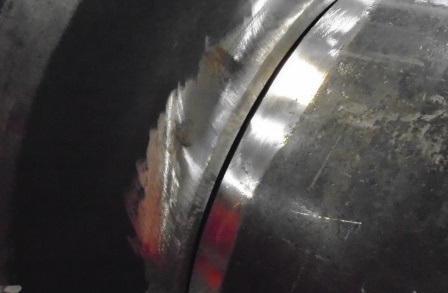A Comprehensive Overview to Welding Examination: Understanding Standards, Techniques, and Best Practices for Quality Control
Welding inspection plays an essential role in making certain the structural integrity and safety of bonded components, demanding a complete understanding of sector criteria such as those established by AWS and ASME. As we discover these crucial aspects, it ends up being evident that the ramifications of welding inspection prolong much past compliance, welcoming a more detailed evaluation of how these procedures form industry requirements and techniques.
Significance of Welding Assessment
Welding examination plays a vital duty in ensuring the stability and safety and security of bonded structures. It is a necessary procedure that validates that welds comply with predefined requirements, which is vital in different markets, including construction, vehicle, and aerospace. By performing detailed examinations, prospective flaws such as fractures, insufficient blend, and porosity can be recognized early, protecting against catastrophic failures that could result in mishaps or expensive repair services.
The value of welding assessment expands beyond mere compliance with regulations; it also fosters count on with stakeholders. Clients and regulative bodies anticipate guarantee that the structures they depend on are developed to endure operational tensions. Effective welding evaluation methods add to long-lasting sturdiness and efficiency of the structures, eventually leading to minimized upkeep costs.
Furthermore, welding examination promotes a society of high quality within companies, urging adherence to best methods and continual renovation. By integrating examination processes into the welding workflow, firms can enhance their reputation and establish themselves as leaders in quality control. In verdict, the significance of welding assessment lies in its capacity to protect lives, ensure architectural reliability, and promote market requirements, making it a vital aspect of welding procedures.
Key Market Standards
Making sure conformity with essential sector standards is vital for keeping the top quality and safety and security of welded structures. Various companies develop these requirements to promote best methods in welding and assessment - Welding Inspection Gilbert Arizona. Amongst the most acknowledged are the American Welding Society (AWS) and the American Society of Mechanical Designers (ASME), which offer detailed standards and specs for welding processes and assessment criteria
AWS requirements, such as AWS D1.1 for architectural welding, synopsis requirements for materials, style, and screening to make certain the integrity of welds. Likewise, ASME codes, consisting of ASME Area IX, control the qualification of welders and welding treatments, making sure constant top quality in commercial applications. Internationally, the ISO 3834 basic highlights high quality demands for combination welding, offering a structure for companies to show conformity with worldwide finest methods.
Compliance with these standards not only enhances the integrity of bonded frameworks however likewise alleviates dangers related to structural failures. Furthermore, adherence to industry criteria is usually a prerequisite for regulatory approvals and can significantly affect job specs. Ultimately, understanding and applying these crucial requirements are essential for reliable welding assessment and quality control.
Inspection Techniques Introduction
Reliable welding inspection relies upon a variety of methods designed to analyze the quality and honesty of welds. These methods can be broadly classified into destructive and non-destructive testing (NDT) methods. Non-destructive testing strategies, which are widely favored in the market, permit for the assessment of welds without compromising the stability of the product.

Among the most generally used NDT techniques are visual assessment, ultrasonic screening, radiographic screening, and magnetic fragment screening. Aesthetic inspection is frequently the very first step in the examination process, allowing assessors to identify surface imperfections and assess weld bead accounts.
Each strategy has its very own benefits and restrictions, making it vital for assessors to pick one of the most ideal technique based on the particular requirements of the project, the products entailed, and the criticality of the welds being examined. This careful option supports and ensures comprehensive analyses security and quality criteria in welding operations.
Common Flaws and Their Ramifications
A complete understanding of typical defects in welds is critical for keeping structural honesty and security in welded buildings. Welding problems can significantly jeopardize the mechanical buildings of the joint, causing failures that might endanger both employees and equipment.
Usual problems include porosity, which materializes as small gas pockets caught in the weld metal, deteriorating the overall framework. Cracking is one more widespread problem, often arising from rapid cooling or inappropriate joint style, bring about tension our website focus that can cause devastating failings. Incomplete fusion happens when the weld steel fails to appropriately bond with the base product, creating weak points that might lead to separation under tons.
Various other notable issues consist of undercutting, where the weld bead deteriorates the base steel, and slag additions, which can prevent the weld's toughness. Each of these defects has certain implications; for example, porosity can minimize ductility, while fracturing straight affects tensile strength. Determining and comprehending these flaws throughout examination is vital for applying corrective measures and guaranteeing conformity with sector criteria, inevitably guarding the structural stability of welded assemblies.
Best Practices for Quality Assurance
Implementing ideal techniques for top quality guarantee in welding procedures is essential for achieving optimal outcomes and decreasing flaws. One important technique is the establishment of clear welding procedures that stick to sector criteria and specifications. These procedures should consist of thorough guidelines relating to material option, joint prep work, and welding methods to guarantee uniformity and high quality.
Normal training and qualification of welding workers are also essential. Skilled welders that understand the importance of quality control are most likely to create sound welds. Additionally, applying a robust inspection program, consisting of both visual and non-destructive testing (NDT), can aid determine issues early in the procedure, enabling timely rehabilitative actions.

Finally, cultivating a society of quality within the organization motivates workers to focus on high quality in their job. By sticking to these ideal methods, companies can boost the integrity try this of their welding processes, ultimately resulting in enhanced product high quality and minimized expenses connected with rework and fixings.
Verdict
In final thought, welding inspection plays a crucial duty in making sure the stability and safety and security of welded frameworks. Adherence to vital sector criteria, such as those established by AWS and ASME, is crucial for efficient quality control. Using different inspection techniques enables the recognition of usual issues, consequently reducing potential risks. By carrying out best practices, organizations can boost integrity, reduce upkeep expenses, and grow count on amongst clients, eventually contributing to successful welding procedures - Welding Inspection Gilbert Arizona.
Additionally, welding assessment advertises a culture of quality within companies, urging adherence page to ideal techniques and continuous improvement. In final thought, the importance of welding inspection lies in its ability to safeguard lives, make sure structural dependability, and copyright industry criteria, making it an essential facet of welding operations.
Amongst the most recognized are the American Welding Culture (AWS) and the American Culture of Mechanical Designers (ASME), which provide detailed standards and specifications for welding procedures and examination requirements.
Inevitably, understanding and carrying out these essential standards are necessary for efficient welding examination and high quality assurance.
Efficient welding assessment relies on a variety of methods created to analyze the high quality and honesty of welds.